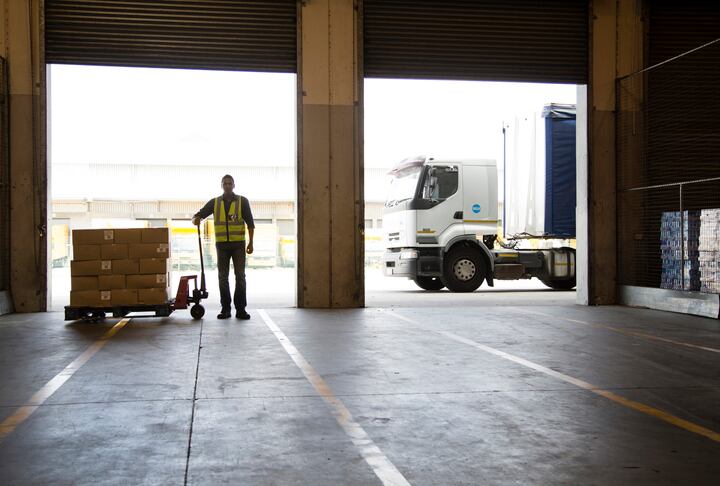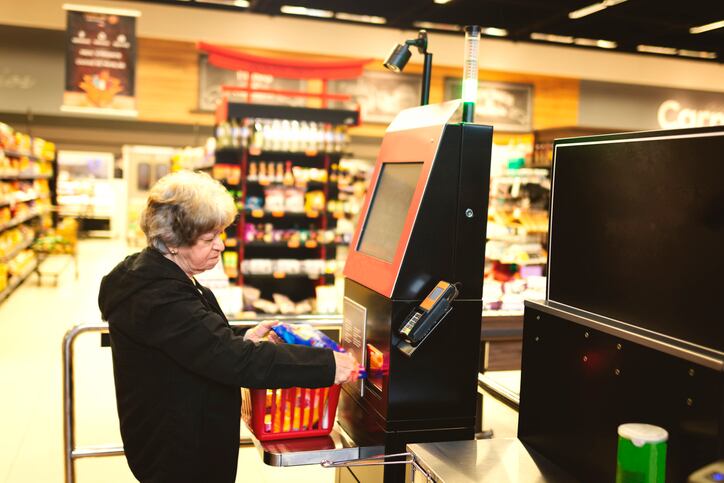Thanks to collaborative efforts by the administration, private industry and labor, the White House touted “critical supply chains are significantly more fluid and resilient than they were when the President took office” in January 2021 with “increased access to transportation and warehousing capacity and equipment, solid throughput at the ports, improved delivery times, greater ocean shipping reliability and steady declines in transportation costs.”
For example, it noted, more than 120 new trucking firms with Registered Apprenticeship Programs are now in place to help attract, train and retain talent and ease restrictions related to a massive driver shortage.
Likewise, the nation’s ports are moving “record levels of cargo” upwards of 25.5 million units in 2022, helping to significantly reduce the backlog of anchored vessels to about a dozen in May from a peak of 155, according to the report.
As a result, the White House Council of Economic Advisors said prices are falling and grocery and drug store shelves are now better stocked than before the pandemic with 92% of goods on shelf.
A strong working relationship
But while there is much to celebrate, there is also still much work to do, according to industry leaders.
“Supply chains today have improved, and we know from our members that product flows are normalizing across several categories,” Doug Baker, vice president, industry relations at FMI – The Food Industry Association, told FoodNavigator-USA.
However, he added, “It is too soon to say they have achieved consistency or the desired resiliency to successfully maneuver through another major national or global crisis” and “there is still work that needs to be done to restore supply chain equilibrium.”
To that end, he argued, “first and foremost, companies and trading partners must manage complexity and lead change. The environment, time, and demand have allowed practitioners to regain footing by increasing manufacturing capacity, holding capacity and establish redundancies with critical ingredient and component manufacturing partners taking stress of primary source of supply.”
He added: “Supply chain transformation can be accelerated through breakthrough thinking, innovation and identifying new ways of working together.”
Tom Madrecki, vice president of supply chain and logistics for the Consumer Brands Association, agreed that teamwork among stakeholders will be essential for long-term supply chain security.
He explained to FoodNavigator-USA that government and private industry need to continue to work together to further reinforce supply chains and avoid potential future snarls as well as unintended consequences from misguided but well-meaning action, according to industry leaders.
“We’ve worked very closely with the administration for years” to address supply chain challenges, congestion and shortages since the pandemic, and “they’ve always been receptive to getting that feedback – and I think that’s reflected in some of the improvements and changes that have happened over the course of the last several years,” Madrecki said.
“It’s also a testament frankly to the private sector’s resilience and ability to get things moving again,” he added.
By working together, he called out several successes that have supported and advanced the CPG industry, including the creation of a national freight data portal, or the Freight Logistics Optimization Works (FLOW) initiative.
“Very early on, consumer brands tried to raise awareness of the fact that one of the ways you could address supply chain issues was by increasing levels of visibility by data-sharing and by exchanging information,” such as where containers and transportation truckers were and when they would be available for other stakeholder, Madrecki said.
He explained that for the relatively low investment of $2m, FLOW has helped 60 companies ship their products more effectively, and demonstrate the value of shared information, which he says he hopes will be a “stepping stone to something much greater down the road.”
Will the White House broker another labor deal to avoid shipping disruptions?
He also lauded the administration and industry’s joint efforts to ease port congestion and avoid an impending freight rail strike last November which he said would have had significant negative consequences.
“One of the way that was achieved was the administration stepped in and actually took this seriously and helped get people together in a room and broker a deal and get Congress to act,” Madrecki said.
He said he is hopeful the administration will take similar action to resolve ongoing West Coast port labor negotiations that have dragged out for more than a year between employers’ Pacific Maritime Association and workers’ International Longshore and Warehouse Union and which some worry will lead to shipping disruptions during upcoming holiday shopping seasons.
Better coordination between agencies needed to avoid unintended consequences
Another area where the CPG industry could use the White House’s support to reinforce supply chains is with a proposed steel tariff that it says could raise canned food prices up to 30%.
“I’d like to see a bit more coordination among the Administration and different agencies to ensure one agency doesn’t do something that threatens the priority of another agency,” he said.
For example, he said if the International Trade Commission greenlights a petition by flat-rolled steel producer Cleveland-Cliffs to tax tinplate steel imports up to 300% then the cost to produce canned food would go up as would prices for consumers – conflicting with the White House’s goal of reducing hunger and making food more accessible.
Ongoing transportation challenges
While White House and congressional efforts to address transportation challenges that threaten efficient shipping have helped reinforce supply chains, Madrecki warns transportation-related challenges are far from fully resolved.
For example, he said, there are still too few truck drivers – although a suite of legislation recently passed by the House Transportation Infrastructure Committee could help – and there are still port challenges.
Baker agreed, noting labor in transportation and warehousing will “continue to be lumpy as the current workforce ages out, or as the labor pool opts for alternative careers, to meet current needs or interests.”
To support those efforts, Baker added FMI is “part of numerous coalitions and advocate for apprenticeships in trucking careers.”
Madrecki added that CBA is working to keep these issues “top of mind” for the administration and congress “ as they go through any sort of exercises and improving supply chain performance and resiliency.”
Even with all of these lingering issues, Madrecki reiterated how far supply chain resilience has come in a relatively short period.
“We’re all trying to run in the same direction. The private sector is doing its part and the administration its part and we have a very good working relationship with the administration. We look to continue that and try to keep them informed about what is impacting our business so that we can also deliver for consumers every day.”




